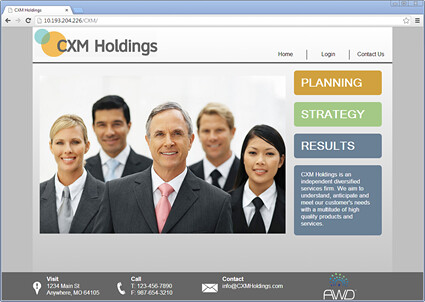I still think that DST is BPM’s best kept secret outside of their own customer base and the mutual fund industry in which they specialize: if I mention DST to most people, even other BPMS vendors, they’ve never heard of them. However, they have the most fiercely loyal customers that I’ve ever seen, in part because Midwest friendliness and generosity permeates their corporate culture and is reflected in how they care about their customers. In 2012, I think I was the first industry analyst ever to attend their annual user conference, and now they invite a few of us to speak alongside their customers and their own team here at AWD Advance. They also have a lot of fun at the conference: last night they hosted a St. Patrick’s Day bash, and tomorrow is John Vaughn’s special treat for the customers: a concert where the band is masked in mystery (even to other senior management) until the event, although he apparently dropped a hint during the keynote and the conference hashtag lit up with guesses.
Although DST has made their mark in back-office transaction processing with origins in imaging and workflow, the functionality in the current AWD10 platform is more like what Forrester calls a Smart Process Application platform: dynamic and collaborative capabilities, analytics-driven recommendations and actions, integration with transactional systems including their TA2000 shareholder recordkeeping system, correspondence management, and more. For many of their existing customers, however, AWD is part of their “business as usual”, and they’re more concerned with keeping thing running smoothly than looking at new functionality; this is starting to change as the consumer market drives toward a more mobile and social experience, but it feels like the uptake for the new functionality is much slower than DST wished it were. One advantage that they have is their huge business process outsourcing business – back in the 90s when I first visited their operation, they processed about 1/3 of all mutual fund transactions in the US, and now they handle health insurance and other verticals – which is a ready recipient for field-testing new features. I had a brief chat with Mike Hudgins, who I heard present last year on microwork, on how they’re rolling that out in the BPO.
The opening keynote for the conference featured Steve Hooley (CEO), John Vaughn (VP Business Process Solutions) and Kyle Mallot (VP Global Insights/Analytics), with a focus on insight, action and results by using big data and analytics to inform processes. They pointed out that we’ve already squeezed out a lot of the inefficiencies in the back office, and that we now need to change the game by offering better customer experiences and deepening customer relationships.
After the keynote, I attended the AWD architecture session where Richard Clark outlined their technology updates: UI standards including jQuery, CSS3 and HTML5; portal functionality and widgets, including mobile support; server updates to allow for a more cloud-like elasticity; additions to REST services; and web services for check processing functions to replace some of their eStub capabilities. A lot of technical detail intended for current system administrators and developers, with a few glimpses of the continuing refactoring of their platform.
I moved over to the product track to see Kari Moeller, Joel Koehler (who provided the screen shots below – thanks Joel!), Brian Simpson and Laura Lawrence show off some use cases for the new(er) capabilities of AWD10. They’re doing a quarterly webinar on this as well, in part to address the issue that I mention above: a lot of current customers just aren’t using the features yet, even though they’ve moved to the new platform. We saw a self-service solution developed by the DST solution consultants based on their experiences with customers, driven by those customers’ customers’ needs: 55% of customers now prefer self-service over calling into a call center (myself included), and 85% will use online functionality to manage their account or relationship. The solution that they demonstrated allows customers to directly manage certain things in their accounts by linking that customer-facing portal directly to AWD: an action on the website such as an address change or account opening kicks off an AWD process to trigger back-office actions, set a timer event for future-dated updates, generate outbound correspondence, or hold for rendezvous with inbound paper documents that require a signature. In addition to allowing customers to initiate transactions, they can also track the transaction – much like courier package delivery tracking – which can significantly reduce calls to the call center. Customers are offered recommendations of other things that they can do, based on what they’ve done in the past and what similar customers have done, bringing analytics into play. The result: a customer online experience that improves customer retention and reduces the load on the back office and call center. Win-win.
Disclosure: DST is my client, and they have paid my travel expenses to be here as well as a speaking fee for my presentation tomorrow. They have not paid me to blog (or tweet), and they have no editorial control over what I write here.

